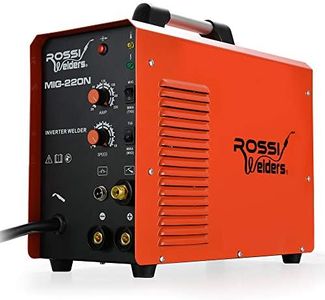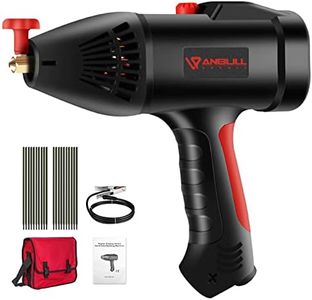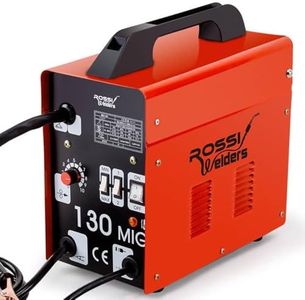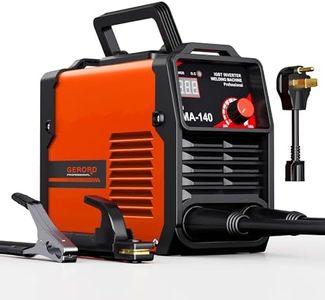We Use CookiesWe use cookies to enhance the security, performance,
functionality and for analytical and promotional activities. By continuing to browse this site you
are agreeing to our privacy policy
4 Best Welder Generator
From leading brands and best sellers available on the web.Buying Guide for the Best Welder Generator
Choosing a welder-generator can be a bit confusing if you’re not familiar with the technical terms, but it's all about finding the right balance between power, portability, and functionality for your intended use. Think first about what you'll be welding, where you'll use the machine, and whether you need it for light repairs, heavy-duty construction, or as a backup power source in emergencies. Understanding a few key features will help you select a machine that’s reliable, easy to use, and matches your work environment.Weld Output (Amperage Range)The weld output, measured in amps, tells you how much power the welder can deliver to the welding process. This is a key spec because different welding tasks and materials require different amperage levels. Lower amperage (around 50-150A) is suitable for thin materials and light work, such as auto body or general home repairs. Medium range (150-300A) covers most general work, farm repairs, and construction. Higher amperage (above 300A) is needed for heavy-duty or industrial welding on thick steel or for extended work periods. Choosing the right range depends on both the type and thickness of materials you plan to weld most often. If you’re unsure, a machine in the mid range can handle the widest variety of jobs.
Generator Power Output (Wattage)The generator wattage tells you how much overall electric power the machine can provide when used as a generator. This is important if you want to use it for powering tools, lights, or as backup electricity. Small welders may offer less than 5,000 watts, which is enough for powering single tools or lights. Mid-range machines (5,000-9,000 watts) can run several tools at once or larger equipment at a job site. Machines above 10,000 watts can support most household or site needs. Match the wattage to what you plan to power beyond welding—make a list of devices, check their wattage, and look for a model with enough output plus a safety margin.
Duty CycleDuty cycle is shown as a percentage, and it tells you how long you can safely run the welder at a set output before it needs to stop and cool off. For example, a 60% duty cycle at 200A means you can weld for 6 minutes, then rest for 4 minutes in a 10-minute period. Lower duty cycles are fine for quick repairs or hobby work. Higher duty cycles matter if you need to do continuous or professional welding, such as in a workshop or on a daily job site. Pick a duty cycle that reflects how intensively you expect to use the welder.
Portability (Weight and Size)Portability refers to how easy it is to move the welder-generator around. If you’ll be relocating the machine often—between job sites or around a property—look for lighter models that can be carried by hand, wheeled, or loaded on a truck. These will usually be more compact but might compromise on output. For stationary use, size is less critical. Match this feature to your work style: if most of your welding is done in one location, a heavier but more powerful unit might suit you best; if flexibility is key, lighter models win.
Fuel Type & Tank CapacityWelder-generators are typically powered by gasoline, diesel, or sometimes propane. Fuel type affects running costs, ease of refueling, and sometimes the environment where the machine can be used (diesel can be safer for enclosed or rugged areas). Tank capacity determines how long the machine can run before needing to refuel. Smaller tanks mean more frequent stops, which is fine for light tasks; bigger tanks mean longer, uninterrupted work, important for larger jobs or remote locations. Choose a fuel type and tank size that fit your usual work conditions.
Type of Welding Processes SupportedSome welder-generators are designed for a single process such as stick (SMAW), while others also support wire-feed (MIG), TIG, or even plasma cutting. The number of welding methods supported adds flexibility but can affect complexity and cost. If you always use one technique, a dedicated model is simpler and usually easier to use. If you might need different welding styles for various projects, pick a model that can support multiple processes.



